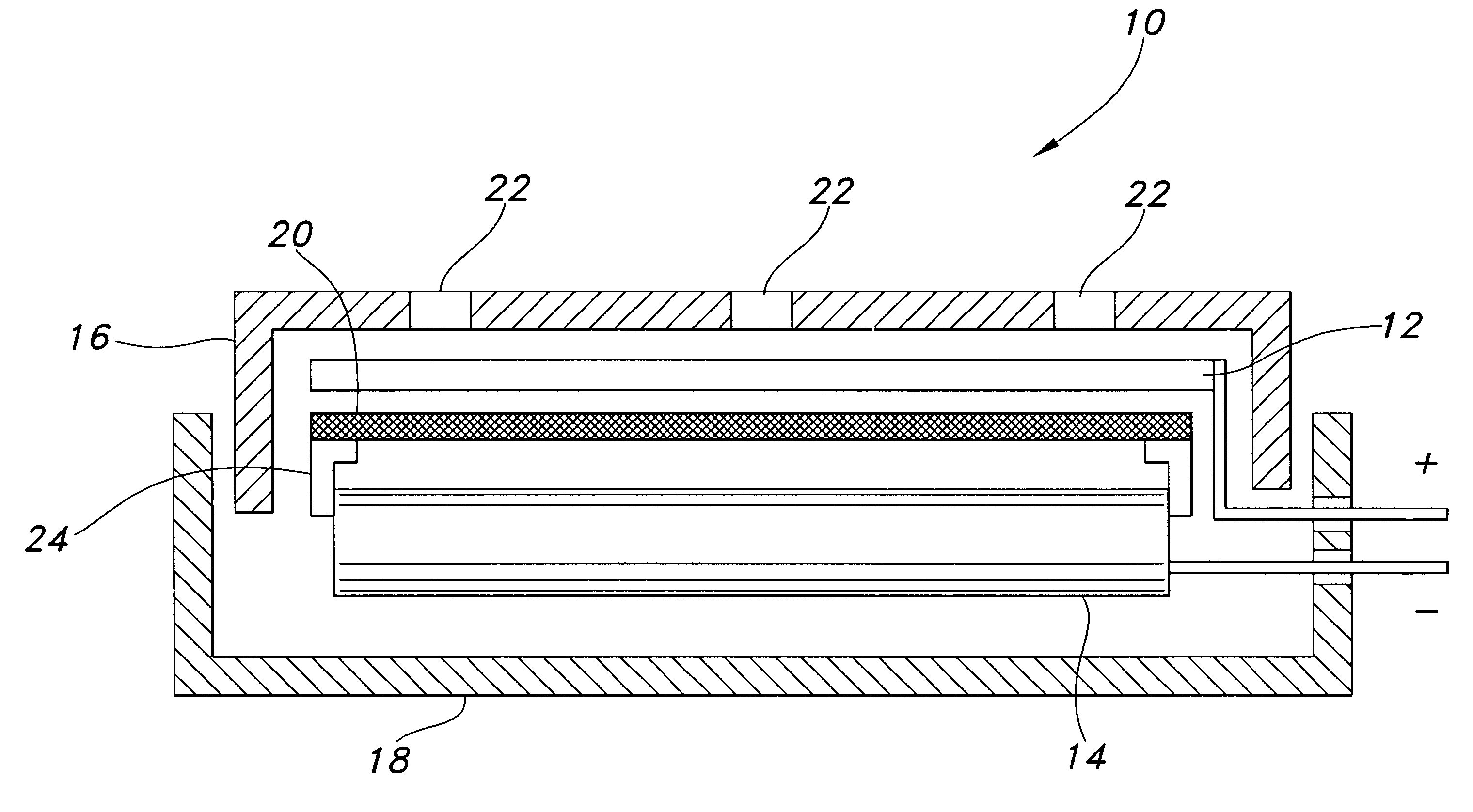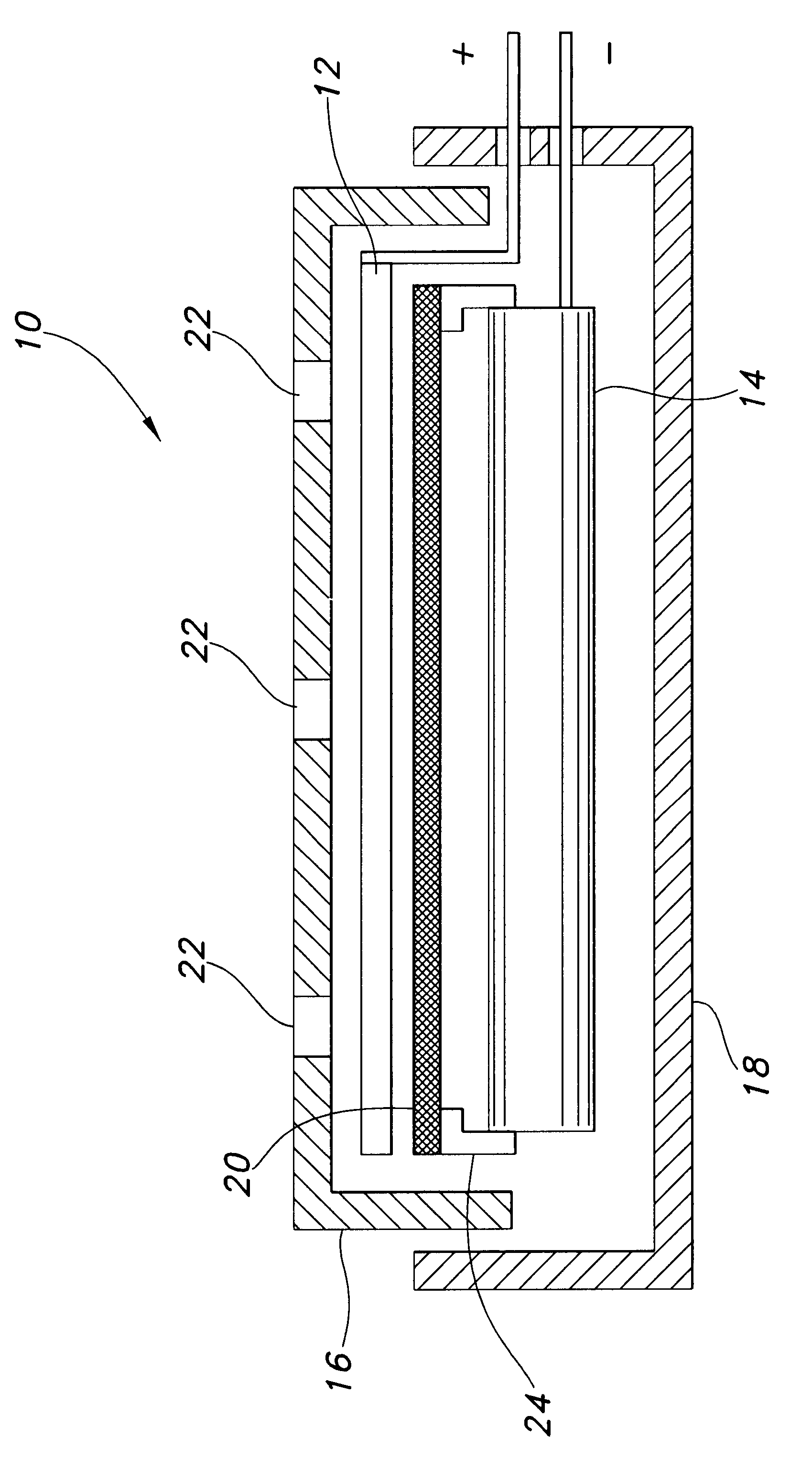Methods for making oxygen reduction catalyst using micelle encapsulation and metal-air electrode including said catalyst
a technology of oxygen reduction catalyst and micelle, which is applied in the direction of manganates/permanentates, cell components, electrochemical generators, etc., can solve the problem of difficult to reduce the particle size of catalyst enough, and achieve the effect of easy dispersion
- Summary
- Abstract
- Description
- Claims
- Application Information
AI Technical Summary
Benefits of technology
Problems solved by technology
Method used
Image
Examples
example 2
A first solution comprising 59.5% by weight cyclohexane, 25.5% by weight Igepal 520 (a surfactant), and 15% by weight manganese nitrate Mn(NO.sub.3).sub.2 is prepared. The solution is mixed in an ultrasonic bath to form a transparent suspension. A second solution comprising 59.5% by weight cyclohexane, 25.5% by weight Igepal 520, and 15% by weight tetraethylammonium hydroxide (C.sub.2 H.sub.5).sub.4 NOH is prepared. The second solution is also mixed in an ultrasonic bath. The second solution is added to the first solution forming a black mixture. 19 grams of activated carbon per gram of manganese (as metal) in solution is added to the mixture, and the mixture is then sonicated for thirty minutes. A precipitate is isolated from the resulting solution by centrifugation. The precipitate is then heated at 500.degree. C. for two hours in an inert atmosphere to yield catalyzed carbon.
The hydrophobic layer of the cathode is made by blending a mixture of Shawinigan acetylene carbon black an...
PUM
| Property | Measurement | Unit |
|---|---|---|
| temperature | aaaaa | aaaaa |
| temperature | aaaaa | aaaaa |
| thickness | aaaaa | aaaaa |
Abstract
Description
Claims
Application Information
 Login to View More
Login to View More - R&D
- Intellectual Property
- Life Sciences
- Materials
- Tech Scout
- Unparalleled Data Quality
- Higher Quality Content
- 60% Fewer Hallucinations
Browse by: Latest US Patents, China's latest patents, Technical Efficacy Thesaurus, Application Domain, Technology Topic, Popular Technical Reports.
© 2025 PatSnap. All rights reserved.Legal|Privacy policy|Modern Slavery Act Transparency Statement|Sitemap|About US| Contact US: help@patsnap.com


